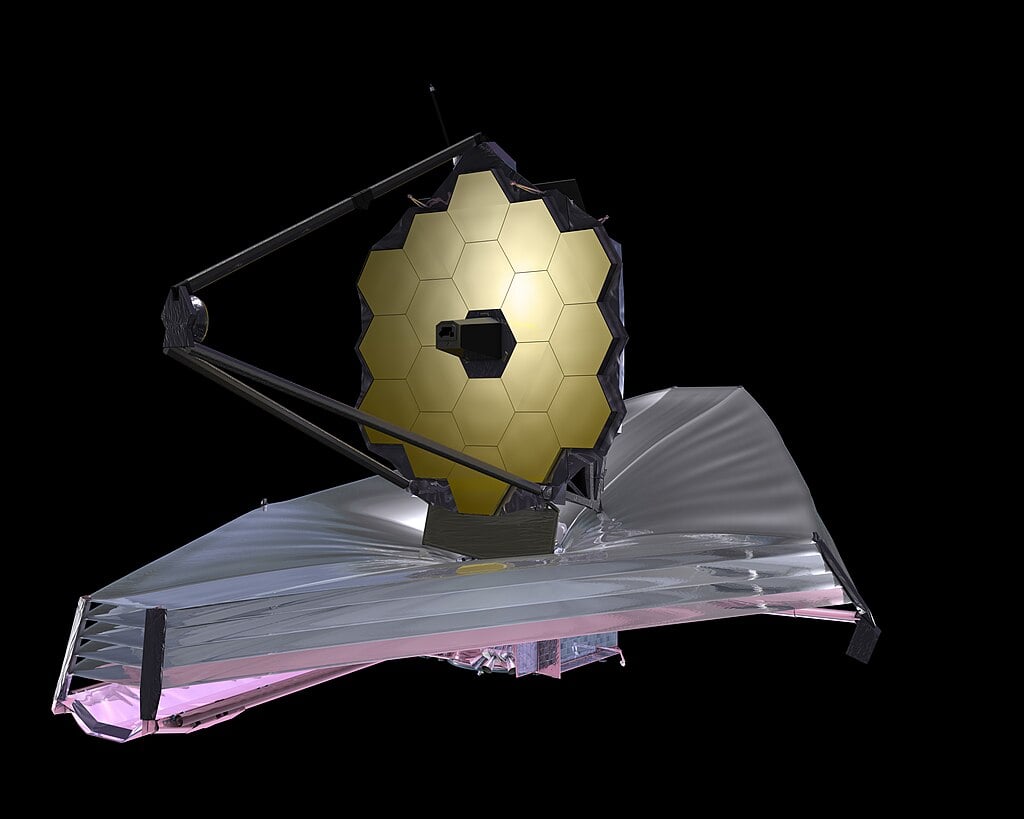James Webb Space Telescope (JWST) has done it again. A team of astronomers have used it to map the weather on a pair of brown dwarf stars. Infrared light was analysed from the pair and its variation over time was measured. The team were able to generate a 3D picture of the weather and discovered gasses in the atmosphere like water vapour, methane and carbon dioxide. Swirling clouds of hot sand were also found with temperatures reaching as high as 950 C!
Weather on worlds beyond our solar system, is likely to be diverse and extreme. Some, like hot Jupiters (worlds that orbit close to their star and have high temperatures) or even brown dwarfs (failed stars) have temperatures high enough to vaporise metals with winds moving at thousands of kilometres per hour. Others, tidally locked planets, show strong contrasts between their hot, sunlit side and cold, dark side, creating intense atmospheric circulation. Advanced telescopes like JWST and space missions are revealing these weather systems, improving our understanding of planetary science.
The team studied brown dwarfs, that are part of a binary system known as WISE 1049AB, the brightest and closest of their type to Earth. Brown dwarfs are celestial objects that bridge the gap between the largest planets and the smallest stars, typically ranging from 13 to 80 times the mass of Jupiter. They lack sufficient mass for sustained hydrogen fusion in the core but emit infrared radiation due to residual heat and fusion of deuterium and lithium. The WISE 1049AB system is about six light years away.
The astronomers observed the light output and how it changed over time to develop a picture of cloudy regions as they rotated into and out of view. This was then visualised as light curves - plots showing how the brightness of each object varies over time. Using this information allowed them to create 3D image of the weather on the objects covering a span of five to seven hours, one day on the brown dwarfs. Not only did they capture and plot light curves but to understand the chemical composition of the atmosphere they explored the different wavelengths of light that were being emitted.
The 3D weather information could help develop a better understanding of brown dwarfs and how they can provide insight into the missing link between planets and stars. The latest study takes previous research work which focussed largely on snapshots of the atmosphere on just one side and expands upon them. Trying to improve the model of atmospheric changes is challenging though because brown dwarfs rotate quickly and the weather can change swiftly.
Using JWST to observe regions of the the infrared spectrum which are not accessible from Earth helps to develop new areas for study including the evolutionary process of brown dwarfs. This study, which was published in the Monthly Notices of the Royal Astronomical Society will enable more detailed studies of brown dwarfs and the mechanisms that drive them.
The team is excited about the results. Not just having helped understand more about brown dwarfs but also to help develop techniques and technologies that might help build a clearer picture of the weather on exoplanets in years to come.
Source : Scorching storms on distant worlds revealed in new detail
 Universe Today
Universe Today


